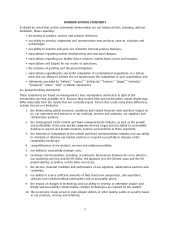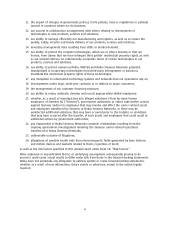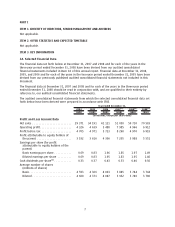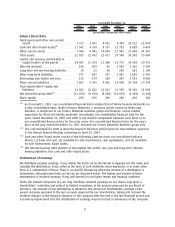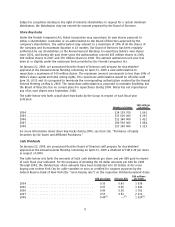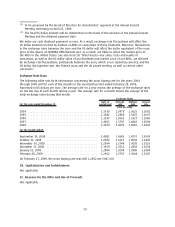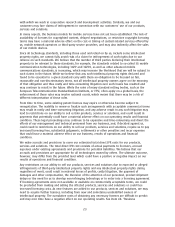Nokia 2008 Annual Report Download - page 16
Download and view the complete annual report
Please find page 16 of the 2008 Nokia annual report below. You can navigate through the pages in the report by either clicking on the pages listed below, or by using the keyword search tool below to find specific information within the annual report.competing software and services for free. Some of the new market segments that we target are still
in early stages of development and it may be difficult to predict the main competitors and
competitive environment in these market segments. In addition, barriers to entry by new competitors
in many of these new segments are low and new products and services, once developed, can be
distributed broadly and quickly at relatively low cost. Further, as the industry now includes increasing
numbers of participants that provide specific hardware and software layers within products, services
and solutions, we also face competition at the level of these layers rather than solely at the level of
complete products, services and solutions. In some of these layers, we may have more limited
experience and scale than our competitors. If we cannot respond successfully to these competitive
developments, our business and results of operations may be materially adversely affected.
Consolidation among the industry participants, including further concentration of the market on fewer
industry participants, or failing industry participants, could potentially result in stronger competitors
that are better able to compete as endtoend suppliers as well as competitors who are more
specialized in particular areas. Moreover, the increased concentration among the mobile network
operators, particularly in North America where sales of mobile devices to operators represent the
major percentage of our sales, has resulted in fewer customers whose purchase preferences may
differ from our current product portfolio and increased reliance on fewer larger customers. In addition
to mergers, the consolidation among the industry participants may take place in the form of various
types of joint ventures, partnerships and other cooperation targeted to obtain potential economies of
scale, such as increased bargaining power and price visibility. These developments could have a
material adverse effect on our business and results of operations.
See Item 4B. “Business Overview—Devices & Services—Competition”, “—NAVTEQ—Competition” and
“—Nokia Siemens Networks—Competition” for a more detailed discussion of competition in our
industry.
We need to have a competitive portfolio of products, services and solutions that are preferred
by our current and potential customers to those of our competitors. If we fail to achieve or
maintain a competitive portfolio, our business, market share and results of operations may be
materially adversely affected.
We serve a diverse range of mobile device and network infrastructure customers across a variety of
markets with different characteristics, dynamics and stages of development. In order to meet our
customers’ needs, we need to have a competitive portfolio with products, services and solutions that
are preferred to those of our competitors. For our devices, a competitive portfolio means a focused,
optimallysized offering of commercially appealing mobile devices with attractive aesthetics, design
and a combination of valueadding functionalities that are easy to discover and use for all major
consumer segments and price points designed, as appropriate, for the local requirements and
preferences of different markets and supported by the Nokia brand, quality and competitive cost
structure. Further, we believe a competitive device product portfolio needs to include leading flagship
products, be innovative and ahead of the expectations of the customer and positively differentiated
from our competition. For our services, including map data and related content, a competitive
portfolio means offering valueadded services and content that are easy to access and use, and
positively differentiate us from our competition. In Nokia Siemens Networks’ business, a competitive
portfolio means a highquality offering of products, services and solutions based on robust
technology and designed to meet the requirements of our customers and local markets, supported by
a competitive cost structure and costeffectiveness to our customers. If we fail to achieve or maintain
a competitive portfolio and balance successfully our global portfolio with the local requirements of
our customers in the different markets we serve in a costeffective manner, our business, market
share and results of operations may be materially adversely affected.
In order to have a competitive portfolio of products, services and solutions and to establish and
maintain good relationships with our customers, we need to identify and understand the key market
trends and user segments and address our customers’ needs in the different markets proactively and
15


